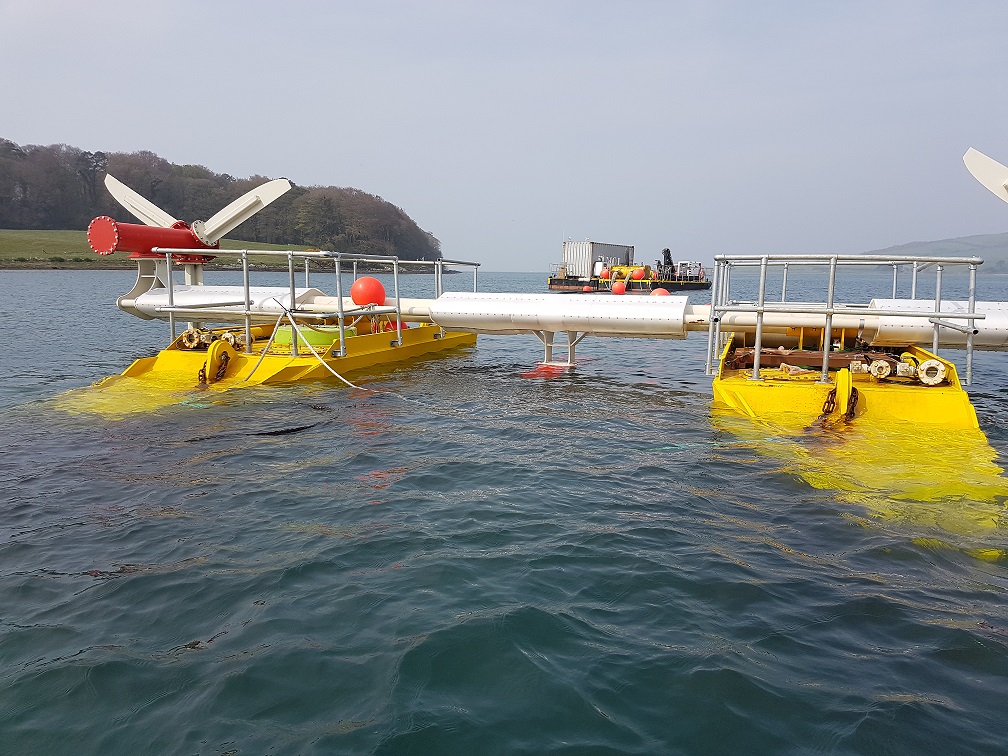“Our vision is to enable tidal energy to be a significant part of the renewable energy mix. We aim to make a tangible impact on global CO2 levels to slow the effects of climate change whilst having a positive impact on the diversity of marine life within our oceans”
Get involved
An exciting opportunity for investors
We're excited to let you know that we'll soon be crowdfunding on Seedrs for our rapidly developing tidal energy business - QED Naval Ltd.
QED has developed a disruptive, self deploying tidal energy solution that simply slashes operations costs and adds great yields through its design and proven turbines. Its strong team has: landed EU Interreg funding and a place on the showcase TIGER project; acquired Tocardo turbines as well as the world’s largest turbine array, the Netherlands OTP dam.
It is about to go through Seedrs for crowdfunding, seeking £500k at a valuation of £12.5m, and I thought you might want to get in early. This is a unique opportunity for us to supercharge our growth, by bringing investors on board as shareholders. This fundraising round will allow us to get going on all the incredible initiatives we have planned for the future.

This is SUBHUB
One of the key design drivers for Subhub was to minimise the environmental impact of the platform. The best way to do that is to make it a seabed mounted system so it is invisible from the surface and maintains the seascape and navigation channels of shipping. It is beyond the diving depth of most birds. Advantageously, it means the extremes of wave loading are exponentially less than at the surface.
Design
Subhub is a submersible, gravity based foundation that supports an array of tidal turbines through life. It's hydrodynamic hull form steers and accelerates the flow into the turbines to significantly enhancing the energy yield having a dramatic impact on the Levelised Cost Of Energy (LCOE) of the overall project.
Deploy
Commonly available harbour tugs are used to tow the Subhub to the tidal site ready for installation. Subhub is installed in a single, quick offshore taking minutes and is as simple as pressing a button on the ballast control system. Subhub takes care of the rest with its inherent submerged stability characteristics, it provides Subhub with its self-installing capability over a wide range of weather, wave and tidal conditions.
Integrate
All the ballast, turbine and electrical control systems are integrated at the quayside within a safe operating environment and not offshore. This enables all systems to be fully commissioned and rigorously tested prior to deployment with only the export cable to be connected providing a plug and play capability.
Support
Retrieval of Subhub to the surface for maintenance is equally as easy by de-ballasting the internal tanks. This process takes minutes and the whole platform gently returns to the surface where is can be towed to sheltered water for maintenance or light tasks performed onsite.
The Subhub's platform management system enables QED Engineers, customers and other stakeholders to monitoring the platform, turbines and environment. This informs the strategy for maintenance and intervention.
Protecting our Fragile Environment
When installed on the seabed with neglible noise or disturbance to marine life, the footprint of the platform is very small. However, the main thing about this seabed mounted device is that you cannot see it so there is NO disruption to the seascapes, which is very important in remote areas and areas of outstanding natural beauty.
Furthermore, the clearance depth of water over the top of the tidal turbines allows navigational channels to be used without cause for concern for shipping.
Finally, one of the main issues on the environmental impact is what happens to the platform and infrastructure at the end of the project’s life or decommissioning. In the case of Subhub everything is easily removed from the seabed by de-ballasting the system and removing the cabling. It can then be assessed for re-use or cut up and scrapped to realise the value in the steel so it can be recycled.
Any questions?
We would love to hear from you.
Please don't hesitate to contact us if you have any questions about projects, our technology, or opportunities to work with us.
It has never been more important to make changes to our enrgy supply.
Our technology is ready to make a difference in the supply of sustainable renewable energy.

